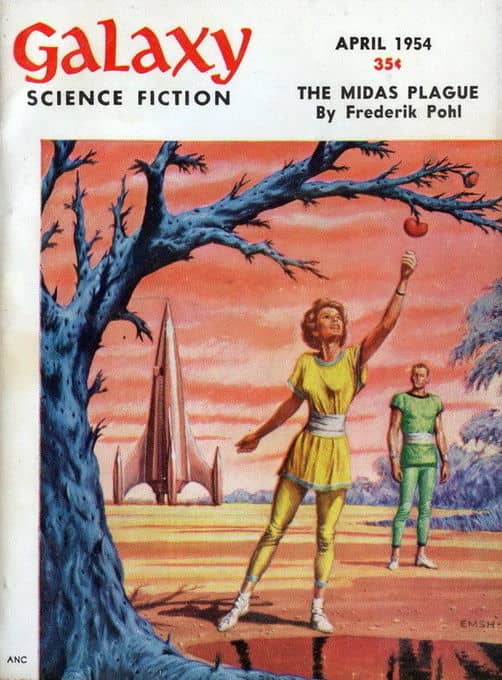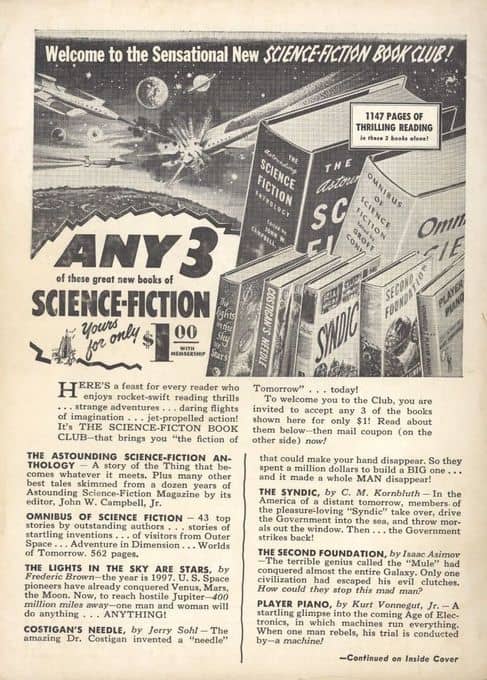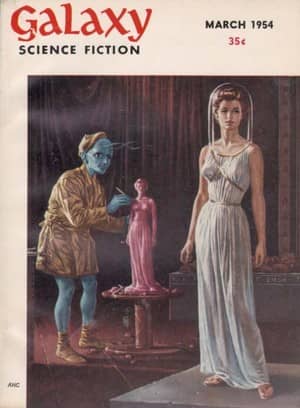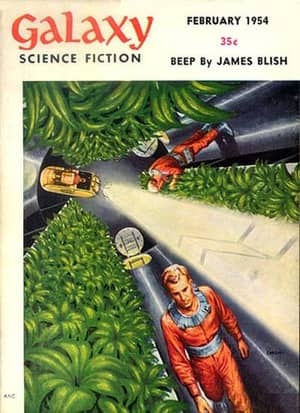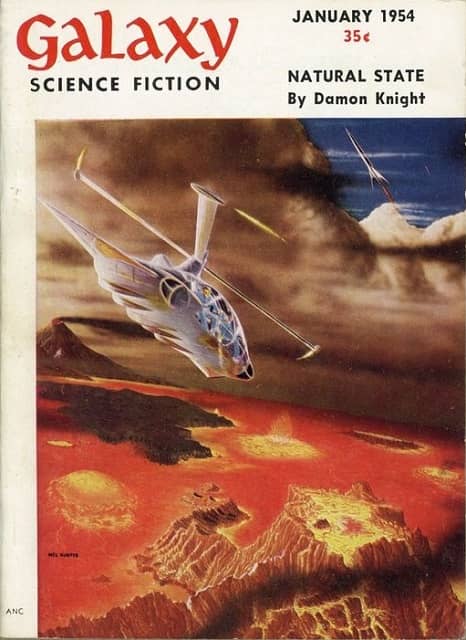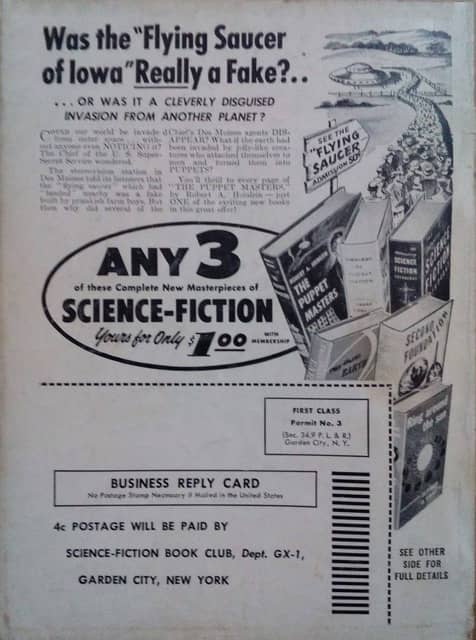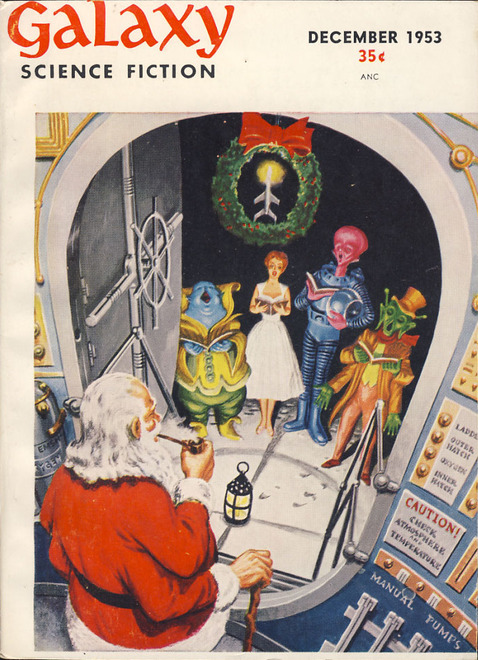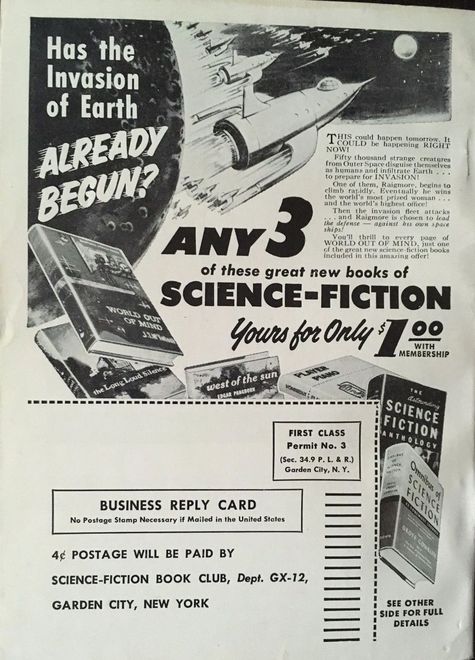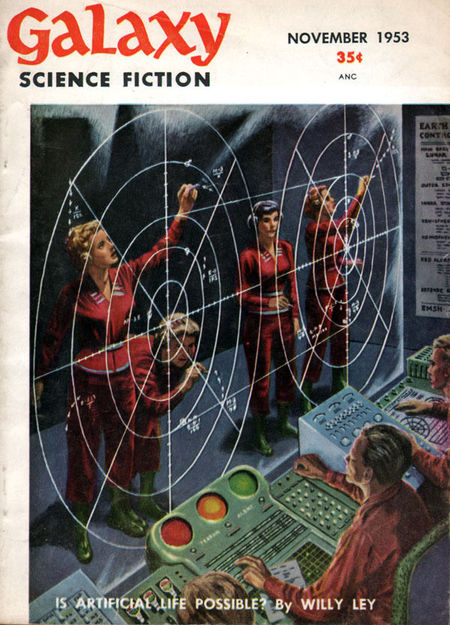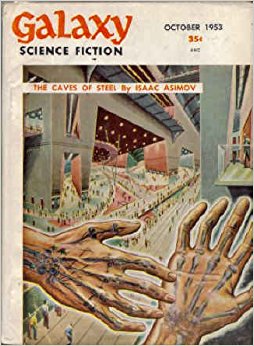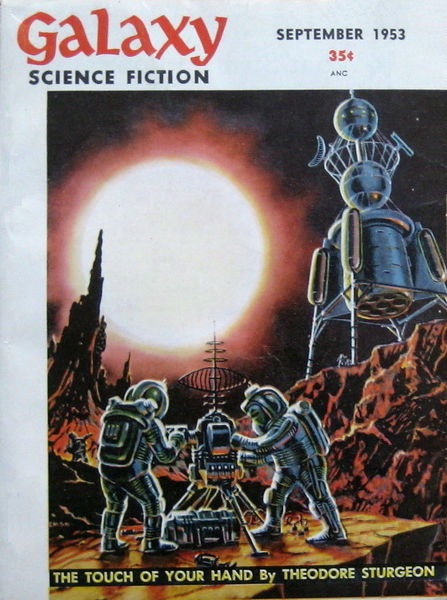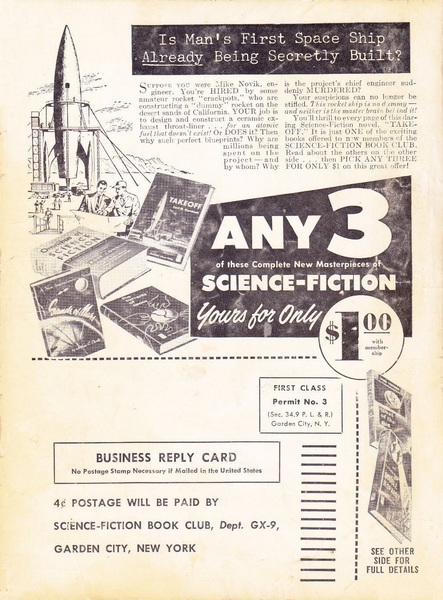Galaxy Science Fiction, May 1954: A Retro-Review
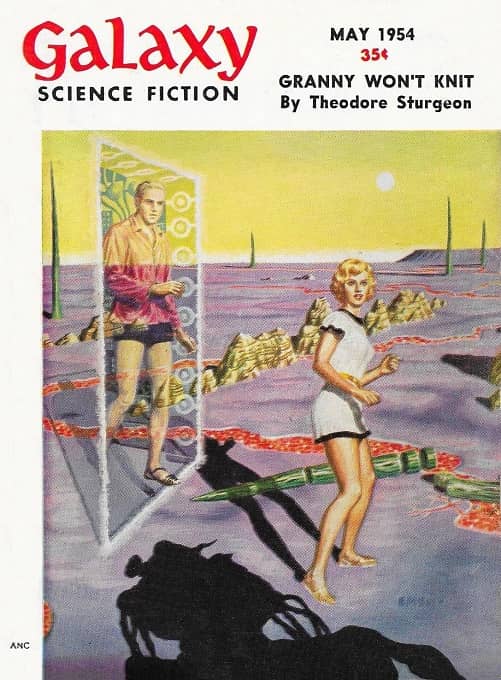 |
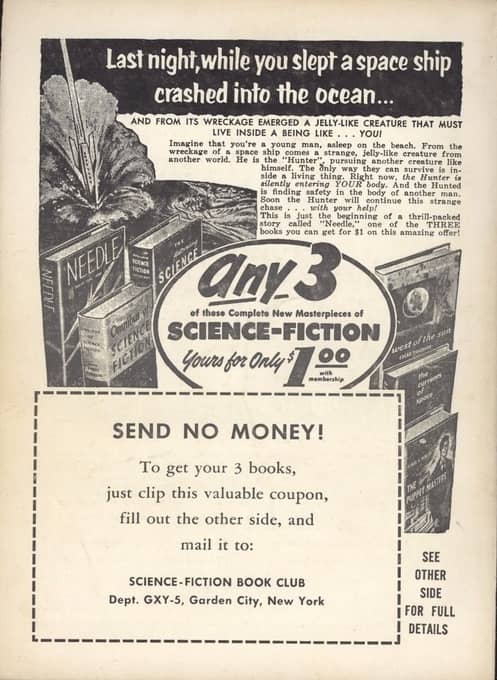 |
The cover of the May, 1954 issue of Galaxy Science Fiction is by Ed Emshwiller, specifically for Theodore Sturgeon’s story “Granny Won’t Knit.” I’ve only noticed a few covers in these early issues that are illustrations of the fiction within. More often, Editor H.L. Gold seemed to prefer unrelated covers for his magazine.
“Granny Won’t Knit” by Theodore Sturgeon — Roan works for his father, who runs a transportation company. Their society has strict rules around proper dress — hiding the bodies and hands of men and women. Families are organized into strict patriarchal units. Though he’s an adult, Roan hasn’t earned the right to begin his own family and remains under the guidance of his overbearing father.
Seemingly by accident, Roan transports himself into the presence of a young woman who has bare arms and hands. She teases him a bit as he flounders to leave. But in the days to follow, he can’t get her out of his mind and is determined to find her again.
Roan also draws closer to his grandmother, who remembers a culture no one speaks of. And she’s not convinced that the current technology for transportation is the best, considering its limitations to the planet Earth. Her strange views are unsettling, yet Roan sees reason in her thoughts and allows that he may be limited in knowledge.
I think this story stands the test of time. There’s not much that glaringly sticks out to make it a 1950s science-fiction story — at least nothing that comes to mind. It works well.
